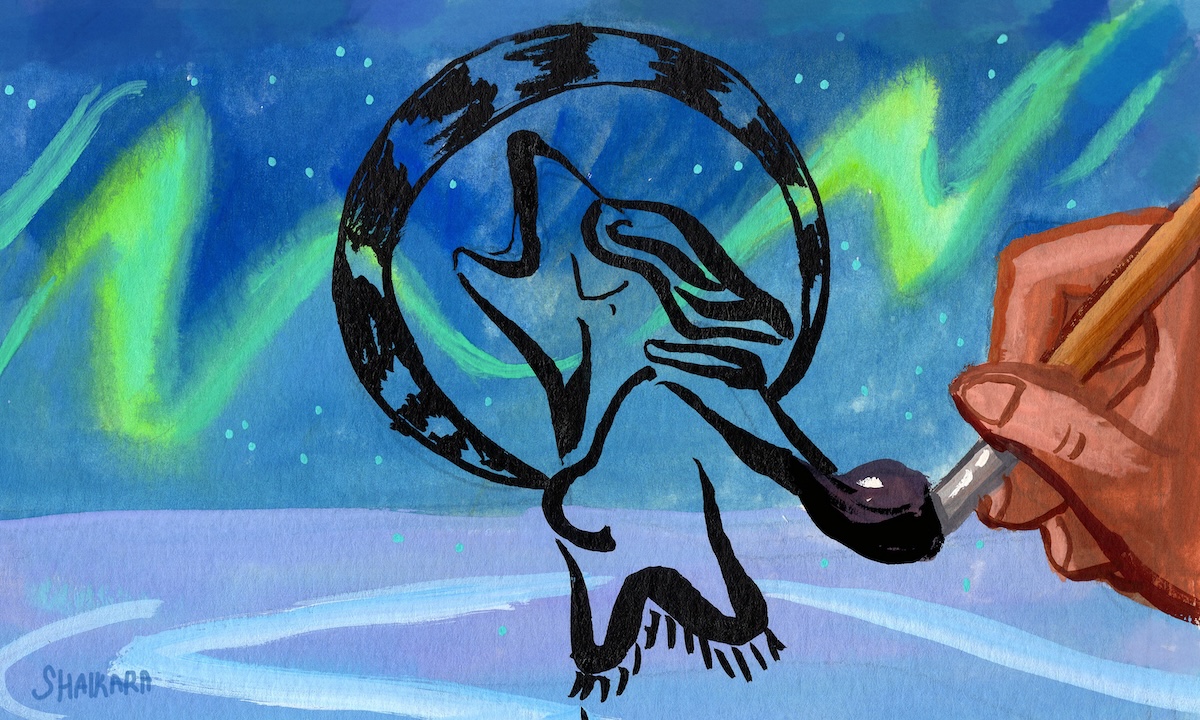Teaching Through Artistry: George Qavviu Ningark Shares the Beauty of Inuit Life and Culture
“I love my artwork because I represent the whole history of Inuit, who they were. We don't want to forget, and that's how I became an artist,” explains George Qavviu Ningark. He was born in Cambridge Bay but he considers Kugaaruk to be home. Born before there were houses in the community, he grew up loving education and all he experienced through school.
Travelling south and seeing animals at the zoo was a transformative experience for him. Ningark was struck by the difference in relationship with time that people in the south have compared to Northern people, how everything operated on a schedule more than it did at home. He wanted to finish his grade 12 education but it would have meant leaving town and his parents did not approve. He ended up getting a job at the local club instead and gave his salary to his parents. They ended up giving him a dirt bike and a snowmobile.
Later, Ningark went on to become a student support assistant, helping students with Down Syndrome in the classroom. Observing how good he was with the students and in Inuktitut language, he was recommended to become a kindergarten teacher. He taught kindergarten for four years before becoming a language specialist half time, teaching classes up to grade six. He also began pursuing his artwork which he learned from his uncle who was a great artist. He would help his uncle in the spring when he would go camping, learning to live off the land, to fish, trap, and hunt seals. He learned to draw from his uncle and to bring what he visualized in his head to life.
Ningark’s approach to teaching was one of mutual respect and one that recognized they are all on a learning journey, even him. He encouraged them to try their best. He would draw as part of his lessons, teaching about Inuit culture, community values and the animals around them.

Ningark taught in the classroom until six years ago when he retired but he still makes art. Two of his four children became teachers, too. It had gotten to a point where it was medically recommended he stop teaching because of his stress and diabetes. He was working as a vice principal and also teaching and it had become too much. His students were unhappy when he had to deal with administrative matters, too. Now he travels South and spends time with his grandchildren. Even though he’s technically retired from teaching in schools, he still teaches art to youth through Connected North because he enjoys it.
While Ningark initially did his art in pencil, he moved to working with permanent markers and started putting his designs on clothing. His wife wanted him to make a design of a wolf for her and he also made a t-shirt for his grandson that everyone asked about. He puts his designs on tshirts, leggings, pants and handbags. He found websites that would put his designs on clothing and hasn’t been able to keep up. He’s also been commissioned to make art for companies. “For my artwork, I want to promote who we are, our grandparents, our ancestors, how they survived in the past, and what animals we have in our country I like,” he explains.
His advice for aspiring artists is, “it takes time if you want to become an artist. If you're serious about it, you could look at other artists around the world, how they create their artwork. It takes time, but once you become one, don't stop…. Enjoy, have fun.” Ningark talks about how it took him twenty to thirty years to become a great artist.
Representing and sharing the history of the Inuit through his art, Georgie Qavviu Ningark became an unforgettable artist so that people would not forget. He took his love of language, art and learning and shared it with his students and is still doing so to this day, even in retirement. It took time to become a great artist, and now he spends his time helping young artists become great.
Thanks to Alison Tedford Seaweed for authoring this article.
Future Pathways Fireside Chats are a project of TakingITGlobal's Connected North Program.
Funding is generously provided by the RBC Foundation in support of RBC Future Launch, and the Government of Canada's Supports for Student Learning program.